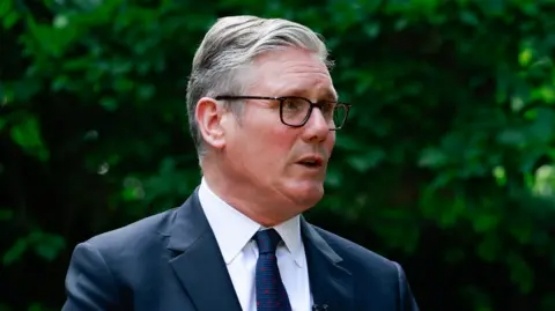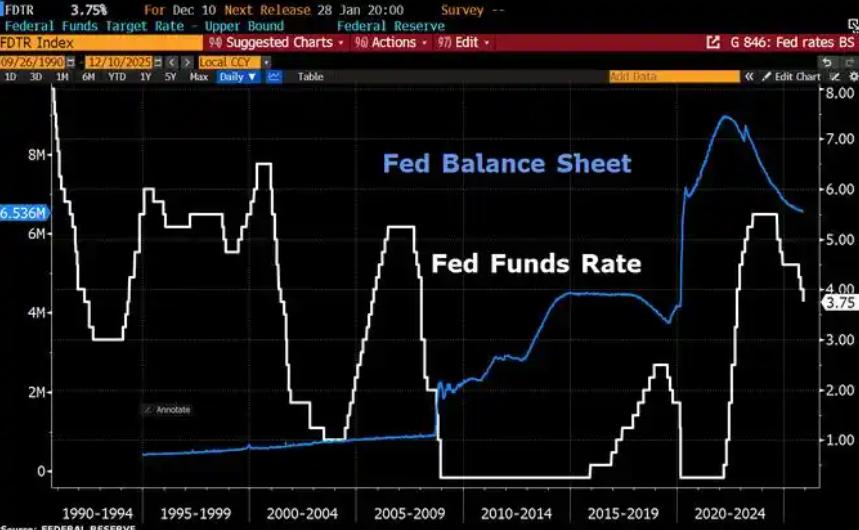
On the eve of the NATO summit, British Prime Minister Keir Starmer announced that the UK would raise its defense spending to 5% of GDP, with the target set for 2035. This decision not only marks a significant shift in the UK's military strategy but also reflects the deep-seated bargaining within NATO over defense spending burden-sharing. From the relentless pressure exerted by the Trump administration to the divergent stances of European allies, the UK's defense spending commitment is both a necessary response to the changing global security landscape and a conundrum involving economic pressures and strategic autonomy.
I. The Global Strategic Backdrop of the Defense Spending Commitment
Starmer's defense spending commitment is not an isolated incident but rather a microcosm of NATO's collective strategic adjustment. Since Donald Trump's election victory, the United States has repeatedly demanded that its allies increase their defense spending from 2% to 5% of GDP, a demand that reached a crescendo at the 2025 NATO summit. By setting the target year at 2035, the UK is not only responding to US pressure but also implicitly engaging in a game of wits with NATO Secretary-General Mark Rutte's proposed 2032 timeline. The 2035 timeline, championed by countries like Italy and the UK, ultimately became a consensus among NATO's 32 member states, reflecting a compromise and balance among European powers regarding defense spending allocation.
The UK's defense spending commitment is closely tied to its global strategic positioning. As the second-largest military power within NATO, the UK aims to maintain its core position within the European defense architecture by continuously increasing its defense investments. Starmer has declared that this increase is an "opportunity to deepen our commitment to NATO," but the more pragmatic considerations lie in countering the Russian threat and safeguarding the transatlantic security bond. The UK military has explicitly prioritized the upgrading of its nuclear deterrence capabilities and the development of new weapons. For instance, it plans to build 12 new nuclear submarines, allocate an additional £15 billion for nuclear weapons projects, and expedite the deployment of equipment such as the "Challenger"-3 main battle tanks and F-35B fighter jets.
II. Economic Pressures and Implementation Dilemmas
Behind the ambition of the defense spending commitment lies the harsh reality of the UK's economic strain. In the fourth quarter of 2023, the UK's GDP contracted for two consecutive quarters, plunging the country into a "technical recession." Despite a 5.1% year-on-year increase in the defense budget for the 2025-2026 fiscal year, the additional £2.2 billion in funding is still insufficient to bridge the long-term fiscal gap. The UK's National Audit Office previously assessed that the equipment plan for 2023-2033 is over budget by £16.9 billion, leading to the reduction of multiple procurement projects: the number of E-7 airborne early warning aircraft has been cut from five to three, the number of Type 26 frigates from 13 to eight, and 26 "Typhoon" fighter jets will be retired without replacement models. This "cutting off one's feet to fit the shoes" approach exposes the contradiction between defense spending growth and equipment modernization.
An even more severe challenge lies in the contradiction between strategic autonomy and dependence on the United States. The UK's nuclear deterrence system is highly reliant on US technology, with its "Trident" submarine-launched ballistic missiles manufactured by Lockheed Martin and requiring maintenance to be shipped back to the US. Despite the UK's declaration of investing in its indigenous nuclear capabilities, the exorbitant costs and lengthy R&D cycles make it difficult to break free from US dependence. Additionally, the UK's investments in emerging technologies such as unmanned systems and artificial intelligence still necessitate sharing technological standards with the US, casting doubt on its strategic autonomy.
III. Ally Differentiation and Internal NATO Bargaining
The UK's defense spending commitment has triggered a chain reaction within NATO. Spanish Prime Minister Pedro Sánchez announced an agreement with NATO to set defense spending at 2.1% of GDP, emphasizing that "a 5% target would lead to disproportionate spending." Belgium has also sought "maximum flexibility" in raising its defense spending target. This differentiation reflects the European allies' resistance to US pressure. NATO's eventual compromise of "3.5% core defense spending + 1.5% related spending" is essentially a product of balancing US demands with European economic affordability.
The UK's defense spending commitment also faces international public scrutiny. Critics point out that the UK's cuts to overseas aid and public service budgets to fund defense spending may exacerbate social inequality. Moreover, the UK's weapons exports declined by 42% in 2024, reflecting a decline in the competitiveness of its defense industry. To stimulate exports, the UK plans to provide a £2 billion special loan, but the efficacy of this measure remains uncertain.
IV. Future Outlook: Can the Ambition Be Realized?
Whether Starmer's defense spending commitment can be achieved hinges on multiple factors. Firstly, the UK needs to maintain an average annual defense spending growth rate of around 3% until 2035, a formidable challenge for an economically sluggish UK. Secondly, the UK must address issues such as equipment procurement overruns and technological dependence; otherwise, defense spending growth may become a mere "numbers game." Lastly, divisions within NATO may continue to fester, and if the US intensifies its pressure, European allies' resistance may escalate.
From a broader perspective, the UK's defense spending commitment reflects profound changes in the global security landscape. Against the backdrop of the ongoing Russia-Ukraine conflict and intensifying Sino-US strategic competition, European countries are forced to strike a balance between security and economic considerations. Starmer's decision is both a concession to US hegemony and an attempt by the UK to revitalize its "Global Britain" influence. However, without a solid economic foundation and strategic autonomy, this commitment may turn out to be a "castle in the air."
The UK's defense spending commitment is a game of strategic ambition and practical challenges. Its success or failure not only concerns the UK's own security but will also influence NATO's cohesion and the direction of the global security order. Before the target year of 2035 arrives, the UK needs to answer a crucial question: How can it ensure security without making the economy and society pay an excessively high price for the increase in defense spending?

Since 2022, the Fed has cumulatively reduced its balance sheet by $2.4 trillion through quantitative tightening (QT) policies, leading to a near depletion of liquidity in the financial system.
Since 2022, the Fed has cumulatively reduced its balance sh…
On December 11 local time, the White House once again spoke…
Fiji recently launched its first green finance classificati…
Recently, the European Commission fined Musk's X platform (…
At the end of 2025, the situation in the Caribbean suddenly…
The U.S. AI industry in 2025 is witnessing a feverish feast…